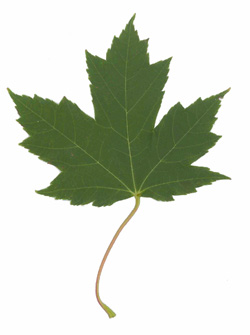Twenty Questions… And the Historical Roots of Contemporary Canada (Michael Dawson)

Pardon me, but who is Louis Riel and what was he fighting for? How and why did Canada develop a welfare state? When did Canada become a consumer society? What explains Canada’s periodic national unity crises? And what (the Hell) can Sunday shopping tell us about the influence of Christianity in Canada? These are a few of the questions that occupy my time at the moment. My answers to these questions are derived in part from my previous research into the history of Canadian nationalism, regionalism, consumerism, and mass culture. The questions, however, emerged in response to my classroom experience teaching introductory Canadian History survey courses.
I have enjoyed teaching survey courses. But I’ve never been fully satisfied with the results. Over the past few years I’ve become increasingly concerned with finding more effective ways to engage the wide range of students sitting before me. (There are always a sprinkling of history majors; but there are also a fair number of non-history majors who are keen but unfamiliar with history as a discipline; and more than a few students who arrive in the course lacking much interest in the topic.) My goal hasn’t changed: to provide all of these students with a broad understanding of Canada’s history and to help them become more informed and productive citizens. But in the past few years I’ve come to believe that a sustained, comprehensive (and thus fairly dense) narrative may not be the most effective approach to pursuing this goal.
 And so, since 2007, I’ve been reinventing what used to be a fairly typical survey course. Its current incarnation, The Historical Roots of Contemporary Canada, departs from the traditional model of a continuous 13-week-long narrative from 1867 to the present. Instead, with a little help from some fancy new “timeline” software and the use of student response devices (or “clickers”), I begin by providing my students with a concise three-week summary of Canadian history. This gives them a broad sense of political, social and economic developments and familiarizes them with key events and a fair number of influential actors and organizations. I then step back and spend the next 10 weeks providing thematic lectures that ask and answer questions such as those I’ve listed above. These lectures, in a very conscious and direct way, speak to the contemporary relevance of Canadian history.
And so, since 2007, I’ve been reinventing what used to be a fairly typical survey course. Its current incarnation, The Historical Roots of Contemporary Canada, departs from the traditional model of a continuous 13-week-long narrative from 1867 to the present. Instead, with a little help from some fancy new “timeline” software and the use of student response devices (or “clickers”), I begin by providing my students with a concise three-week summary of Canadian history. This gives them a broad sense of political, social and economic developments and familiarizes them with key events and a fair number of influential actors and organizations. I then step back and spend the next 10 weeks providing thematic lectures that ask and answer questions such as those I’ve listed above. These lectures, in a very conscious and direct way, speak to the contemporary relevance of Canadian history.
My earlier, “traditional,” approach to the survey course was working just fine – at least in terms of positive course evaluations and minimizing my course prep. But my gut told me that there was an opportunity here to engage many of my students more directly with shorter, more focused narratives that are, for the most part, contained in a single class lecture. In the past I would find myself awkwardly transitioning from one topic to another. For example, I would move from the October Crisis to the National Energy Program (because they both appeared at similar points in the historical chronology) with “wishful thinking” transitions along the lines of “You’ll no doubt remember that a rich tradition of western grievance has existed concerning issues such as the tariff and federal control over natural resources… .” I now get to walk into class and tell them that for the next eighty minutes we’re going to examine everything they need to know about the origins and influence of western alienation. We get to talk about the October Crisis in the context of a lecture on French-Canadian nationalism and/or Canada’s “rights revolution.” The result, so far, is that my students are peppering me with more (and better) questions and comments in the classroom.
Taking this approach has, of course, forced me to set aside (or at the very least dramatically rework) a set of lecture notes that I’d carefully constructed over many years. And it’s encouraged me to delve into books and articles and primary sources that I hadn’t yet found the time to examine. In short, it’s re-energized my approach to teaching Canadian history. My ultimate aim is a book of Twenty Questions (And Answers) – co-written with Catherine Gidney -- that will hopefully appeal to a broad non-academic readership interested in learning more about the historical roots of contemporary Canada but who are, like many of my students, reluctant to immerse themselves in a comprehensive 600-page narrative.

